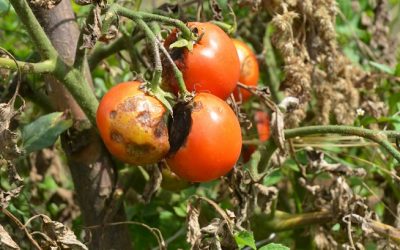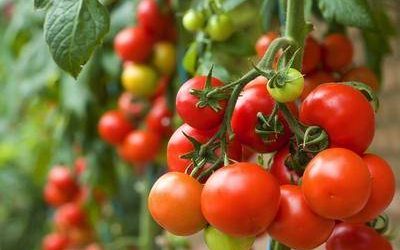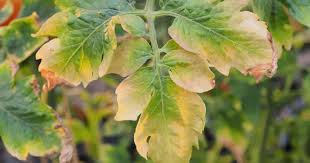Management of Tomato diseases & pests in early stages

During the Nursery Stage
Select a nursery site far away from tomato fields to avoid the spread of pests and diseases into the nursery.
Prepare the seedbed properly. Use forest topsoil and/or compost.
Burn plant trash on the surface of seedbed for at least one hour and after cooling, mix soil with compost or livestock manure at a rate of 20 litre-container per square metre.
In semi-arid areas, solarise seedbeds. Use certified disease-free seed of suitable varieties.
Use varieties tolerant or resistant to pests and diseases.
Treat own seed with an appropriate fungicide and insecticide to protect it against pests and diseases.
Avoid sowing seeds densely; space at 5 x 5 cm; if necessary thin seedlings at first true-leaf stage and transplant in another bed.
Keep the seedbed free of weeds.
Irrigate the seedbed regularly but avoid overwatering as it can induce damping-off diseases. Do not water late in the afternoon because extended wetness of leaf surfaces promotes foliar diseases. Reduce watering from the third week to harden seedlings.
Cover seedlings with insect-proof netting in areas where virus diseases are endemic. This will restrict infestation by insect vectors of viral diseases.
Alternatively, spray or drench with appropriate insecticides.
Inspect the nursery regularly for pests, diseases, weeds, nutritional disorders, soil moisture and general plant health. Remove weak and unhealthy looking seedlings.
During the Transplanting Stage
Avoid transplanting seedlings near an old tomato crop.
Ensure that a new field is sited uphill, particularly where surface irrigation is used to avoid the spread of soil-borne diseases.
Use proper plant spacing as prescribed by seed companies. Plant border rows of coriander, fenugreek, maize, marigold, millet, pigeon pea or sorghum. They act as windbreaks; fenugreek and coriander are repellent to whiteflies and provide refuge for natural enemies.
Apply organic manure, mixing it well with the soil before transplanting.
Transplant seedlings late in the afternoon. This is important in dry areas to avoid transplanting stress.


